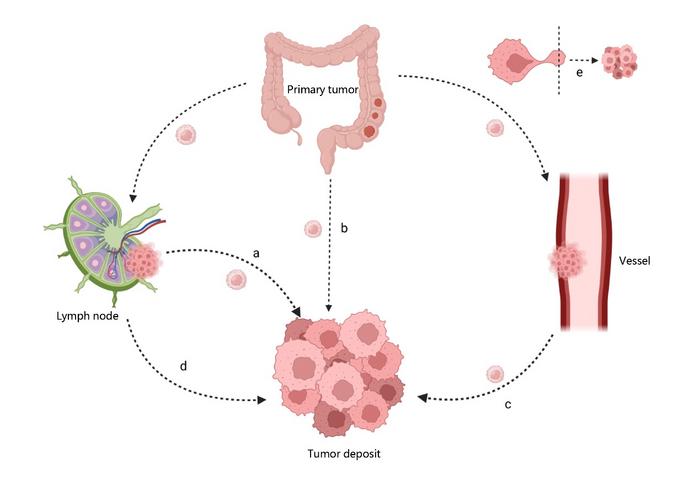Tyrosine Kinase Inhibitors Combat Ewing’s Sarcoma
Ewing’s sarcoma (ES) stands as one of the most aggressive primary bone malignancies, predominantly afflicting children and adolescents. This rare but deadly cancer has posed significant treatment challenges due to its rapid progression and limited therapeutic options. Recent advances in molecular oncology have illuminated the crucial role of receptor tyrosine kinases (RTKs) in the pathogenesis […]


Ewing’s sarcoma (ES) stands as one of the most aggressive primary bone malignancies, predominantly afflicting children and adolescents. This rare but deadly cancer has posed significant treatment challenges due to its rapid progression and limited therapeutic options. Recent advances in molecular oncology have illuminated the crucial role of receptor tyrosine kinases (RTKs) in the pathogenesis of ES, ushering in a renewed focus on tyrosine kinase inhibitors (TKIs) as potential therapeutic agents.
At the molecular level, RTKs are transmembrane proteins that regulate essential cellular processes including proliferation, differentiation, migration, and survival. In Ewing’s sarcoma, aberrant expression and activation of certain RTKs have been identified, suggesting these receptors contribute directly to tumor growth and resistance to conventional therapies. Among the most notably overexpressed RTKs in ES are insulin-like growth factor 1 receptor (IGF1R) and vascular endothelial growth factor receptor (VEGFR), both of which correlate strongly with aggressive tumor phenotypes and poorer clinical outcomes.
The IGF1R pathway, in particular, has garnered intense scrutiny. IGF1R mediates signals that promote cell proliferation and inhibit apoptosis, mechanisms that are frequently hijacked in malignant cells. Elevated levels of IGF1R expression in ES tumors not only drive malignancy but also offer a tangible target for intervention. Parallel to this, VEGFR contributes to tumor vascularization, enabling the formation of new blood vessels that fuel tumor growth and metastasis. Targeting VEGFR thus disrupts the tumor’s blood supply, highlighting its therapeutic importance.
In addition to IGF1R and VEGFR, other RTKs such as platelet-derived growth factor receptor (PDGFR), stem cell factor receptor (c-KIT), and hepatocyte growth factor receptor (MET) have been found overexpressed in ES samples. These receptors collectively contribute to a complex signaling network that sustains the malignant phenotype, promoting unchecked cellular proliferation, survival, and invasive behavior. The overexpression profiles point toward a multi-faceted therapeutic approach, where inhibiting several RTKs simultaneously might yield superior antitumor effects.
The development of tyrosine kinase inhibitors has revolutionized cancer therapy across multiple malignancies by selectively targeting aberrant signaling pathways. In ES, several TKIs have shown clinical promise, notably apatinib, anlotinib, and cabozantinib. These small molecules function by binding to the ATP-binding sites of specific RTKs, thereby preventing receptor phosphorylation and downstream signaling cascade activation. Apatinib primarily targets VEGFR2, limiting angiogenesis, while anlotinib and cabozantinib exhibit broader RTK inhibition profiles, impairing tumor growth and metastasis more robustly.
Emerging clinical data highlight the potential of these TKIs in managing recurrent or refractory ES cases that have failed standard chemotherapeutic regimens. The use of TKIs in such contexts has been associated with measurable tumor regression, disease stabilization, and, in some cases, prolonged survival. Importantly, these therapies often come with more favorable toxicity profiles compared to traditional cytotoxic agents, improving patient quality of life during treatment.
Despite these advances, challenges remain in optimizing TKI-based therapies for ES. One critical issue is tumor heterogeneity, whereby variations in RTK expression among patients—and even within individual tumors—result in differential therapeutic responses. This underscores the urgent need for reliable predictive biomarkers that can identify which patients are most likely to benefit from specific TKI regimens, enabling precision medicine approaches in ES care.
Combination therapies incorporating TKIs with other modalities, such as chemotherapy, immunotherapy, or novel targeted agents, are being actively investigated. The rationale is to simultaneously target multiple oncogenic pathways and overcome resistance mechanisms that often arise when TKIs are used as monotherapies. Early-phase trials exploring IGF1R inhibitors alongside other treatments show encouraging signs of enhanced efficacy, providing a roadmap for future clinical protocols.
Additionally, the evaluation of patient eligibility based on biomarker positivity is paramount. Biomarkers reflecting RTK overexpression or activation status can refine patient stratification, ensuring that therapies are administered to those most likely to derive benefit. This biomarker-driven approach could mitigate unnecessary exposure to ineffective treatments and their associated toxicities, streamlining therapeutic interventions to be both efficacious and precision-tailored.
Crucially, future clinical studies must also embed quality-of-life assessments to comprehensively evaluate the impact of TKI therapies. While extending survival remains a primary goal, maintaining or improving functional status, managing side effects, and preserving psychosocial well-being are equally important outcomes that define the real-world value of oncologic treatments.
The systematic review of TKIs in the management of Ewing’s sarcoma also prompts broader reflections on the evolving landscape of targeted therapy in pediatric and adolescent cancers. The paradigm shift from indiscriminate cytotoxic chemotherapy to mechanism-driven, biomarker-guided interventions embodies the future of oncology, potentially transforming lethal malignancies into manageable chronic diseases.
Scientific inquiry must continue to unravel the intricate signaling networks that underpin ES pathology. Advanced techniques such as single-cell sequencing, proteomics, and real-time monitoring of tumor dynamics present opportunities to refine target identification and monitor therapeutic responses with unprecedented precision.
Moreover, the integration of artificial intelligence and machine learning in analyzing vast datasets from molecular profiling and clinical trials could accelerate the discovery of novel TKIs and combinational regimens. Such technologies may also assist in optimizing dosing schedules, predicting adverse events, and tailoring interventions to individual tumor biology.
In aggregate, the current evidence supports the promise of tyrosine kinase inhibitors as a pivotal component in the therapeutic arsenal against Ewing’s sarcoma. While significant hurdles remain, the convergence of molecular insights, clinical innovation, and patient-centered care heralds a new era in which targeted therapies translate into meaningful clinical benefit for young patients battling this formidable disease.
As ongoing and future research endeavors harness the full potential of TKIs, it is imperative to uphold rigorous study designs and international collaboration. Only through concerted efforts can the pipeline from bench to bedside be expedited, ensuring that discoveries culminate in tangible improvements in survival and quality of life for children and adolescents with Ewing’s sarcoma.
Subject of Research: Tyrosine kinase inhibitors as therapeutic agents in Ewing’s sarcoma, focusing on RTK overexpression and targeted treatment approaches.
Article Title: Tyrosine kinase inhibitors in Ewing’s sarcoma: a systematic review
Article References:
Assi, A., Farhat, M., Mohanna, R. et al. Tyrosine kinase inhibitors in Ewing’s sarcoma: a systematic review. BMC Cancer 25, 735 (2025). https://doi.org/10.1186/s12885-025-14130-y
Image Credits: Scienmag.com
DOI: https://doi.org/10.1186/s12885-025-14130-y
Tags: aggressive primary bone malignanciesEwing’s sarcoma treatment optionsIGF1R role in Ewing’s sarcomainnovative strategies for cancer therapymolecular oncology advancementsovercoming treatment challenges in Ewing’s sarcomapediatric bone cancer therapiesreceptor tyrosine kinases in cancertargeted therapy in sarcomatumor growth and resistance mechanismsTyrosine kinase inhibitorsVEGFR in bone malignancies
What's Your Reaction?


































